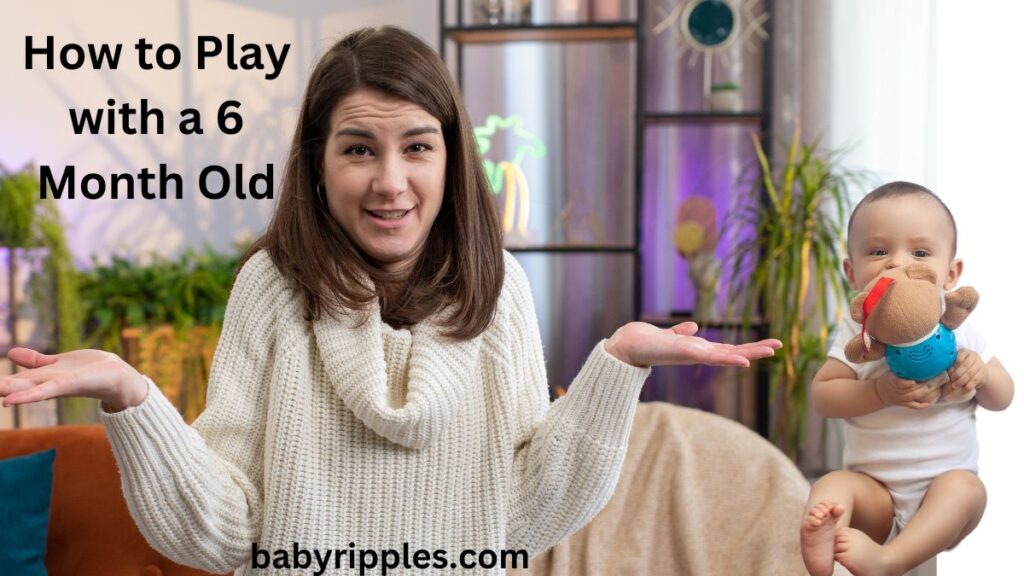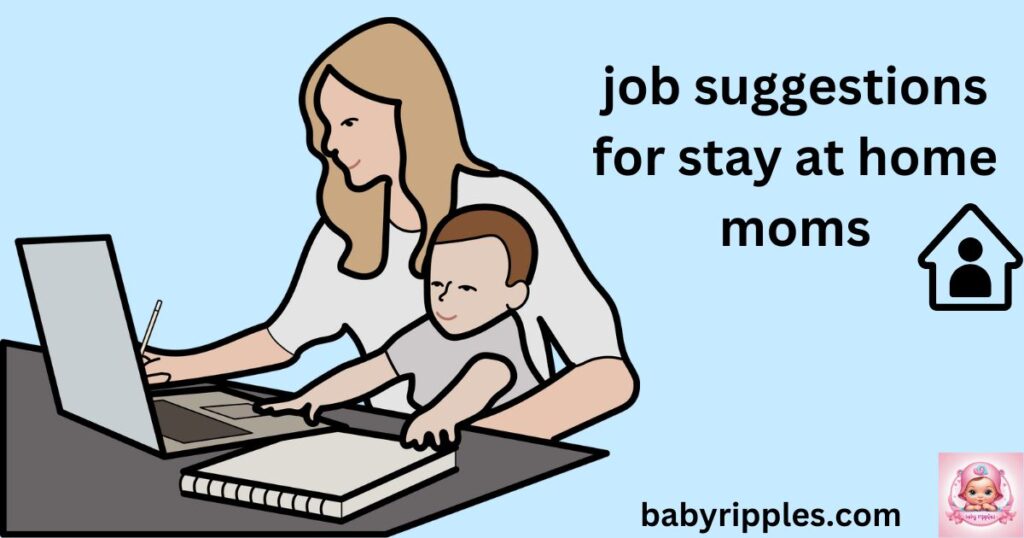You’re not the only parent or caregiver that is unsure about how to play with a 6 month old? It may be both wonderfully satisfying and a little intimidating to engage a baby at this age.I am a mother of 6 years old and i will tell you how to play with a 6 month old. The good news is that you can engage and amuse your child in a variety of ways that will help them grow. This post will discuss enjoyable games, hobbies, and ways to keep your 6 month old active and content.you can also learn about Meal Ideas for 6 Month Old.
Why Play is Important for Your Baby
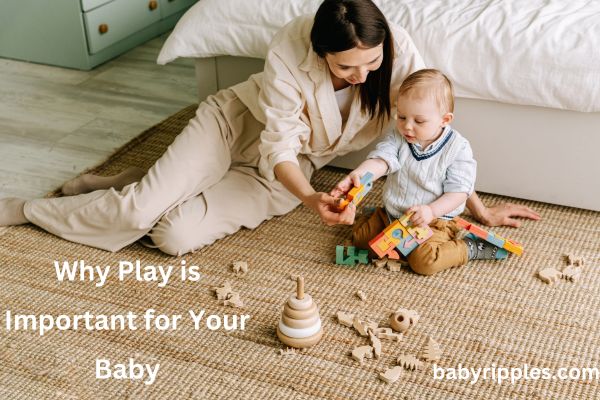
Playing is important for your baby’s growth and isn’t only for fun. Babies at six months old are learning to communicate with others, improving their motor skills, and becoming more conscious of their surroundings. They can develop their muscles and form connections in their brains by engaging in activities that require them to move, touch, and explore. You may encourage your baby’s development and assist them in meeting significant developmental milestones by introducing playful activities into your everyday schedule.
1: Engage in Sensory Play to Feel the Feels
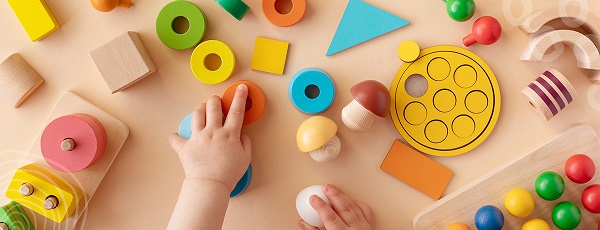
One of the best methods to keep your baby interested and encourage cognitive development is through sensory play. Here’s how to configure it:
1: Compile the materials:
Seek out various textured textiles, such as crinkly materials, plush velvet, or soft cotton. They can be divided into handkerchief-sized squares.
2: Involve Your Infant:
- Have your infant sit down and let them to examine the various textiles. Urge them to feel, touch, and rub each one. The phrases “This one is smooth!” and “Feel how fluffy this one is!” are examples.
- In addition to providing your infant with entertainment, this activity helps them develop their sense of touch, which is essential for their general growth.
2. Shake It Off: Homemade Instruments

A delightful and instructive hobby is creating music with your infant. You can make your own musical instruments in the following ways:
Supplies Required:
Fill a tiny, empty plastic bottle with grains or dried beans.
Safety First:
To avoid any choking concerns, make sure the lid is securely fastened. Another option is to seal it with tape.
Composing Music:
Encourage your infant to shake the bottle as well. Shake along to some of your favorite tunes!
Your baby’s coordination and sense of rhythm are enhanced by this practice.
3. Tummy Time: The Foundation of Physical Development

Strengthening your baby’s shoulder, back, and neck muscles requires tummy time. Here’s how to add some fun to it:
Create a Comfortable Environment:
Place your infant on their stomach and cover the floor with a comfortable blanket. For some additional bonding, you can join them on the floor.
Interactive Play:
Offer your infant toys to help them reach and crawl while they are on their stomach. Additionally, you can communicate to them and move about them to maintain their interest.
Frequent tummy time aids in the development of the muscles required for crawling and other significant developmental milestones.
4. Play Ball: Simple Rolling Games
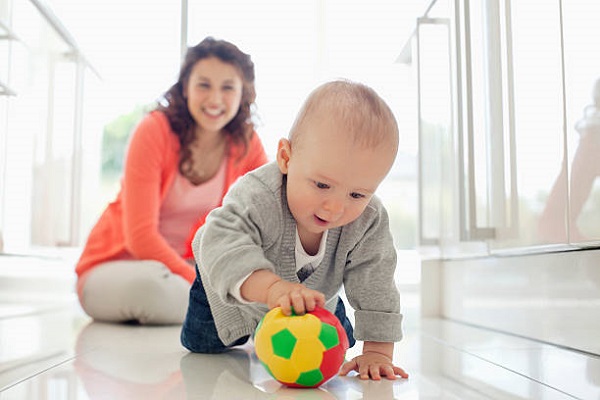
One excellent method to improve hand-eye coordination is to play with a ball. Here’s how to play:
Select a Safe Ball:
To prevent choking concerns, choose a soft ball with a diameter of at least 6 cm.
Rolling the Ball:
Roll the ball in the direction of your infant while sitting a short distance away. Motivate them to return it to you.
As your baby watches the ball roll back and forth in this game, they will learn about cause and effect in addition to being entertained.
5. Peek-a-Boo: A Timeless Classic
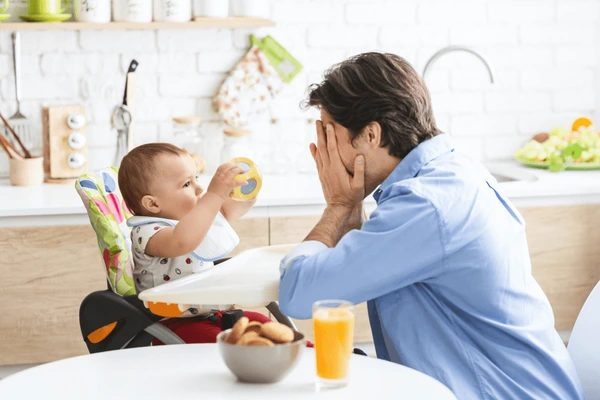
A simple yet entertaining activity, peek-a-boo can make your infant smile and chuckle. Here’s how to play:
Cover Your Face:
Cover your face with a handkerchief or your hands. Say “Peek-a-boo!” and unveil yourself with a broad smile after a few seconds.
Mix It Up:
To provide variation, you may also conceal toys beneath a cloth and then expose them.
Your baby will learn about object permanence—the idea that things exist even when they are hidden from view—through this game.
6. Get Moving: Fun Physical Activities
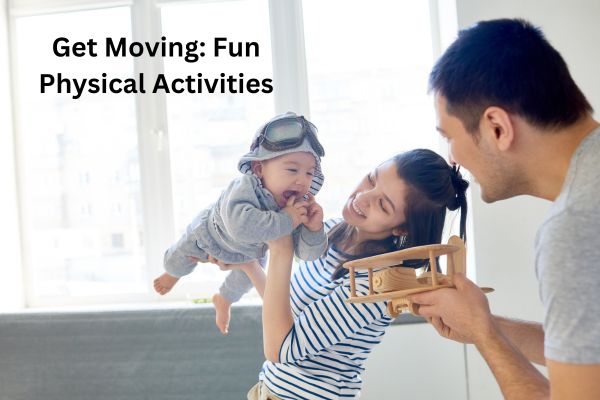
Get imaginative with your physical activities because babies love to move! Here’s a creative method to keep your infant moving:
Shoulder Rides and Aeroplane:
Pretend to fly your infant around like an airplane while holding them firmly and gently riding on your shoulders.
Surprise Raspberries:
To make them laugh and smile, lightly blow raspberries on their stomach.
with addition to being fun, these exercises aid with your baby’s coordination and balance development.
7. Smell and Tell: Exploring Scents

Try this entertaining kitchen-based exercise to stimulate your baby’s sense of smell:
Gather Ingredients:
Arrange a few items from your refrigerator, such as herbs, fruits, and veggies.
Smelling Together:
Have your infant describe the scents as you take turns sniffing each item. “This one is tangy!” or “This one smells sweet!”
This activity improves your baby’s sensory development while exposing them to new things and words.
.
8. Storytime Adventures
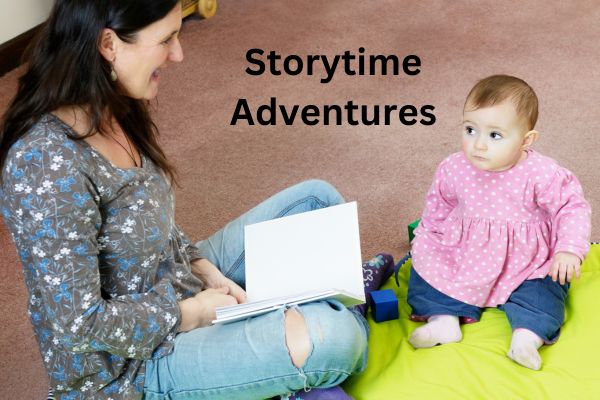
One of the best ways to encourage language development in your infant is to read to them. Here are some tips for making it fun:
Select Board Books:
Choose durable board books with straightforward text and vivid illustrations.
Take Part in the Story:
Read aloud while utilizing a variety of tones and facial expressions. Ask questions like as, “What color is this?” while pointing to the images.
This practice helps your infant develop a love of stories and promotes early literacy abilities.
9. Blow Bubbles: Magic in the Air

Bubbles can mesmerize babies! Here’s how to create this magical experience:
Create bubbles outside or in the living room by using a wand and a bubble solution. See the wonder light up your baby’s eyes.
Promote Interaction:
To help your baby develop hand-eye coordination and motor skills, let them try reaching for the bubbles.
Just take care not to irritate them by blowing bubbles in their face.
10. Clapping Games: Rhythm and Rhyme

Clapping games are a fun way to introduce rhythm and language. Here’s how to do it:
Clap Along:
Clap your hands together while sitting with your infant. You can sing a basic tune or count your claps.
Make It Interactive:
To promote engagement and excitement, encourage your infant to clap with you.
In addition to promoting language development, this exercise presents the idea of counting.
11. Can I Kick It?: Leg Exercises
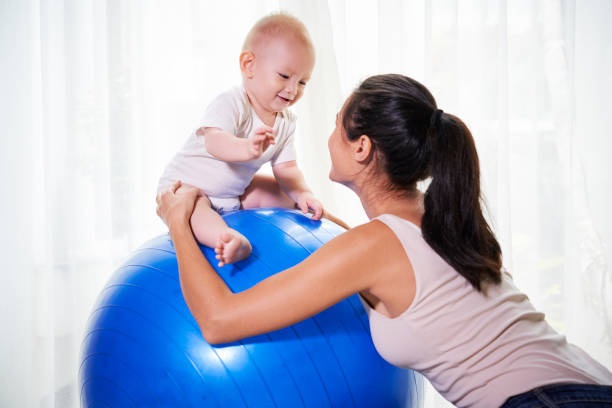
You may help your baby develop stronger muscles by encouraging them to kick their legs. This is an enjoyable activity:
Lay on Their Back:
Encourage your infant to kick their legs while they are lying on their back.
Use a Cloth:
Place a tea towel or light cloth close to their feet and allow them to kick against it.
Leg strength and coordination are enhanced by this exercise.
12. Taste a Toy: Sensory Exploration

Babies at this age enjoy putting everything in their mouths to investigate things. To do this safely, follow these steps:
Pick Toys Safe for Babies:
Provide a range of toys with various textures that are safe for babies.
Encourage Exploration:
As you talk about colors and shapes, let your baby investigate and taste each toy.
Your baby’s sense of touch and taste will grow as a result.
13. Hide and Seek: Finding Fun

Your baby can learn about object permanence and problem-solving skills from this easy game. Here’s how to play:
Employ boxes:
Place empty cardboard boxes on the floor, and beneath one, place your baby’s favorite toy.
Promote Discovery:
Assist your infant in finding the toy, teaching them that objects can be concealed but still exist.
14. Get Glittery: Magical Sensory Bottles

Creating sensory bottles is a fun and visually stimulating activity. Here’s how:
Create Glitter Bottles:
Put a teaspoon of glitter into a clean plastic bottle filled with water. Tightly seal it.
Shake and Watch:
Let your infant shake the bottle and see the swirling glitter.
Their attention is captured by this activity, which also promotes sensory exploration.
15. Dance Off: Groovy Moves

Dancing is a fun way to connect with your child! To begin, follow these steps:
Play Your Favorite Music:
With your infant in your arms, dance while listening to lively music.
Promote Movement:
As you sing along, let your infant sway and bounce to the tunes.
This promotes physical activity and emotional connection.
16. House Tour: Exploring Together
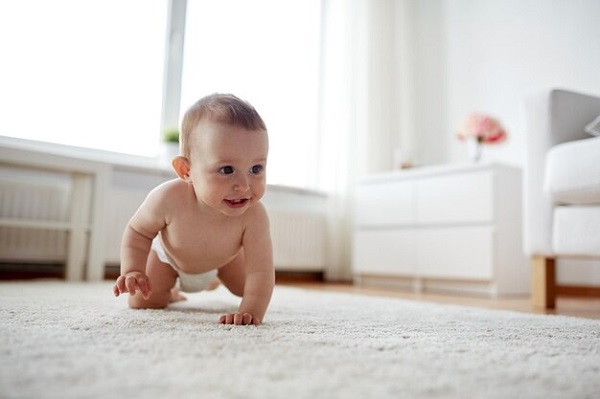
Spend some time introducing your infant to your house. Here’s how to add some fun to it:
Highlight Fascinating Features:
Point out items, hues, and textures as you stroll around your home.
Explain Their Observations:
Help your infant learn new words by talking to them about everything you experience.
They become more accustomed to their environment and improve their linguistic skills through this practice.
17. Water Play: Splashes of Fun

Playing in the water may be entertaining and instructive. Here’s how to configure it:
Create a Water Station:
Gather some plastic dishes and cutlery, as well as a shallow tub of warm water.
Exercise Careful Supervision:
Encourage your infant to splash, pour, and play with the water as you sit with them.
Both fine motor abilities and sensory inquiry are encouraged by this sensory exercise.
18. Laundry Time: Involve Your Baby

Including your infant in daily tasks can be a fun experience. Here’s how to keep things interesting:
Sort the Laundry Together:
As you sort clothes, sit with your infant and allow them to feel various textiles.
Promote Interaction:
Encourage your infant to touch and explore by dressing in colorful objects.
This lets your baby participate in your routine while teaching them about colors and textures.
19. Chime Time: Musical Fun with Pots and Pans

Your kitchen may be transformed into a concert venue! Here’s how:
Gather Pots and Pans:
Get some wooden spoons as well as a few pots and pans.
Form a Band:
Allow your child to make noises and knock on pots. You can participate to start a jam session with your family!
This exercise is ideal for developing auditory and creative abilities.
20. Celebrate with Bubbles and Balloons

There’s no better way to cap off an enjoyable play time than with balloons and bubbles. The following is how to celebrate:
Blow Bubbles and Allow Balloons to Float:
Give your infant some bubbles and little balloons to pursue and burst.
Laugh:
Take part in the fun and giggles to make it an unforgettable occasion!
conclusion
A thorough guide on how to play with a 6 month old ? is now available to you! You may promote your 6-month-old’s growth and development in addition to providing them with entertainment by participating in these activities. Keep in mind that every connection matters and that play is an essential component of learning. Seize these opportunities because they generate enduring memories and solid relationships. By incorporating these playful strategies into your daily routine, you can support your baby’s development while enjoying precious moments together. Happy playing!
You may want to Read: 8 Month Old Feeding Routine: Schedule & Food Ideas for Your Little One
Frequently Asked Questions about how to play with a 6 month old ?
1. What are some safe activities for a 6-month-old?
Activities like sensory play with fabrics, tummy time, and reading books are safe and engaging for a 6-month-old.
2. How do I entertain my 6-month-old during playtime?
Use simple toys, engage in clapping games, and explore different textures to keep your baby entertained.
3. What games can I play with my 6-month-old?
Classic games like peek-a-boo, rolling a ball, and shaking homemade instruments are perfect for this age.
4. What are some things to do with a 6-month-old to promote development?
Engage in activities that enhance sensory experiences, motor skills, and language development, like reading or sensory play.
5. How can I encourage my 6-month-old to move?
Activities like tummy time, rolling games, and shoulder rides can motivate your baby to move and strengthen their muscles.

